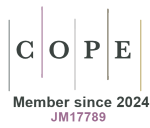Most read articles by the same author(s)
- Matteo Ruggeri, Francesca Romana Rolli, Cost per response/remission in biologics available in Italy for the treatment of TNF-α inhibitors-naïve patients with ulcerative colitis , Global and Regional Health Technology Assessment: Vol. 6 No. 1 (2019): January-December 2019
- Andrea Aiello, Maria E. Mancuso, Serena Leone, Letizia Rossi, Lorenzo Cioni, Cristina Teruzzi, Cost analysis of extended half-life recombinant factor IX products in the treatment of haemophilia B in Italy: an update , Global and Regional Health Technology Assessment: Vol. 9 No. 1 (2022): January-December 2022
- Michela Bobini, Eugenio Di Brino, Americo Cicchetti, Towards a Green Health Technology Assessment: embedding Life Cycle Assessment for sustainable choices , Global and Regional Health Technology Assessment: Vol. 12 No. 1 (2025): January-December 2025
- Andrea Aiello, Maria Elisa Mancuso, Alessio Colombo, Cristina Teruzzi, Patrizia Berto, Budget impact analysis of extended half-life recombinant factor IX (rFIXFc) in the treatment of haemophilia B , Global and Regional Health Technology Assessment: Vol. 7 No. 1 (2020): January-December 2020
- Eugenio Di Brino, Matteo Ruggeri, Stefania Boccia, Nicoletta Cerana, Domenica Lorusso, Dario Sacchini, Antonella Savarese, Liliana Varesco, Americo Cicchetti, A cost-minimization analysis of a preventive testing strategy for relatives of patients with BRCA mutated ovarian cancer , Global and Regional Health Technology Assessment: Vol. 7 No. 1 (2020): January-December 2020
- Eugenio Di Brino, Claudio Jommi, Price and reimbursement of medicines when new indications are approved: the results of a survey on ISPOR Italy Rome Chapter members , Global and Regional Health Technology Assessment: Vol. 10 No. 1 (2023): January-December 2023
- Stefano Fagiuoli, Matteo Ruggeri, Filipa Aragao, Rob Blissett, The Clinical and Economic Benefits of a New Paradigm of HCV Diagnosis and Treatment , Global and Regional Health Technology Assessment: Vol. 8 No. 1 (2021): January-December 2021
- Francesco S Mennini, Andrea Marcellusi, Chiara Bini, Maria Assunta Rotundo, Alessandro Giunta, Antonio Gasbarrini, Guido Valesini, Pier Luigi Canonico, Ettore Novellino, Valentina Orlando, Alessandra Mecozzi, Teresa Gamucci, Livio Pagano, Eugenio Di Brino, Matteo Ruggeri, Americo Cicchetti, The economic impact of biosimilars in Italy: a scenario analysis , Global and Regional Health Technology Assessment: Vol. 6 No. 1 (2019): January-December 2019
- Lucrezia Ferrario, Barbara Menzaghi, Giuliano Rizzardini, Alessandro Roccia, Elisabetta Garagiola, Daniele Bellavia, Fabrizio Schettini, Emanuela Foglia, Optimization in the HIV treatment: economic and organizational impact analysis of Bictegravir/Emtricitabine/Tenofovir Alafenamide , Global and Regional Health Technology Assessment: Vol. 12 No. 1 (2025): January-December 2025
- Silvia Coretti, Filippo Rumi, Dario Sacchini, Americo Cicchetti, SIR-Spheres® Y-90 resin microspheres in chemotherapy refractory or intolerant patients with metastatic colorectal cancer , Global and Regional Health Technology Assessment: Vol. 6 No. 1 (2019): January-December 2019









